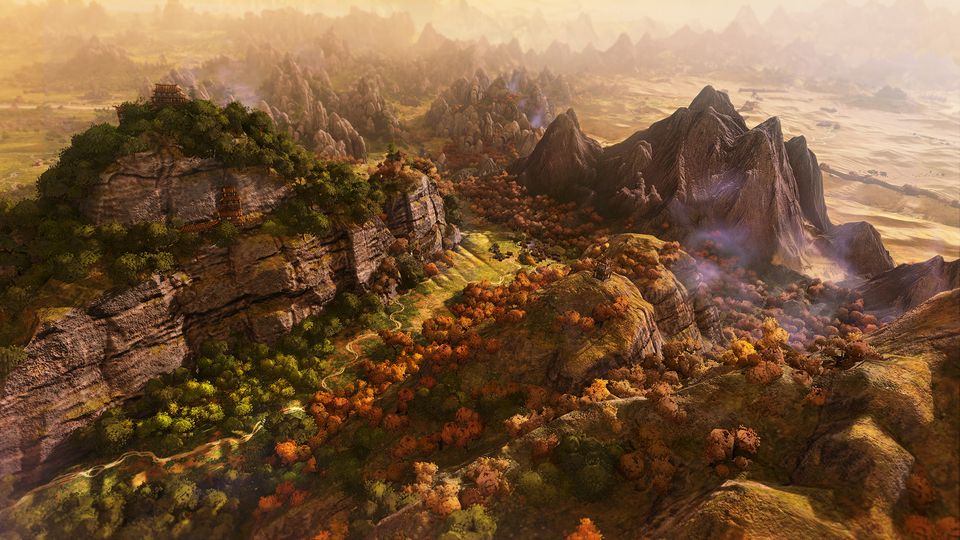Table of Contents Show
When one of your armies attacks (or is attacked by) another army, or is ordered to attack a settlement owned by another faction, you will have the option of delegating the battle – in which case the battle outcome will be automatically calculated according to the forces involved – or you may choose to fight the battle in real-time.
Formations Guide
If a Strategist is present in an army, he will unlock new formations for units across the entire army. You can order units to adopt these formations and enhance aspects of their performance in battle.
Other Total War Three Kingdoms Guides:
- Total War Three Kingdoms: Guide to Factions
- Total War Three Kingdoms: Guide to Armies
- Total War Three Kingdoms: Guide to Siege
- Total War Three Kingdoms: Guide to Characters
- Total War Three Kingdoms: Guide to Administrators
- Total War Three Kingdoms: Buildings Guide
- Total War Three Kingdoms: Food Guide
- Total War Three Kingdoms: Diplomacy Guide
- Total War Three Kingdoms: Unit Abilities and Types
- Total War Three Kingdoms: Spies & Espionage Guide
Loose (all)
Loose formation introduces wider spacing between individual soldiers, and increases the physical footprint of the unit. This makes individual soldiers harder to hit with arrows, but significantly decreases their charge resistance rating.
Diamond (cavalry)
Forms the cavalry unit into a diamond shape. This reduces the unit’s speed somewhat, but increases its mass, its melee charge bonus and, if the unit has shields, its melee evasion rating. Most useful for dealing punishing flank and rear charges against units which are already engaged in melee.
Wedge (cavalry)
Forms the cavalry unit into a wedge shape. This has the effect of increasing the unit’s mass, charge speed and charge bonus, but reduces its ranged block chance and its speed. Most useful for punching through enemy front lines in order to reach softer units behind, such as archers.
Hollowed Square (polearm infantry)
Forms the infantry unit into a square, with soldiers facing outward on each side, and thus presenting no vulnerable flank or rear for enemy units to attack. Hollowed Square increases the unit’s melee evasion rating, but makes it immobile until the formation is cancelled. Best used on the flanks of your army to protect from roaming enemy cavalry who may attack from any angle.
Spear wall (polearm infantry)
Forms pike and spear infantry into a dense wall, with weapons from the second rank interpenetrating between troops in the front rank. This very significantly increases charge resistance and boosts melee evasion, but reduces the unit’s ranged block chance and limits the unit to walking speed. Most useful on a slowly advancing front line. Spear and pike units in spear wall formation also benefit from bracing and charge reflection when stood still – an extremely potent defensive combination.
Turtle (shielded polearm infantry)
To form the turtle, soldiers overlap their shields to create a nearly seamless protective barrier, with gaps through which their weapons are presented. This formation significantly increases the unit’s charge resistance and ranged resistance, but limits it to walking pace and reduces its melee attack rate.
Shield Wall (melee infantry with shields)
Forms melee infantry into a dense wall with strong shield protection. This significantly increases the unit’s charge resistance and ranged block chance, but limits the unit to walking speed. Best used on the army’s front line, while slowly advancing towards an enemy who threatens to charge.
Circle (melee infantry)
A powerful defensive formation which organises melee infantry into a tightly-packed circle with all individual soldiers facing outward. This ensures the unit presents no vulnerable flank or rear for enemy units to charge. Circle formation increases the unit’s charge resistance, ranged block chance and melee evasion, but reduces its melee attack speed, and makes it immobile until the formation is cancelled. Best used when the unit is being threatened from all sides.
